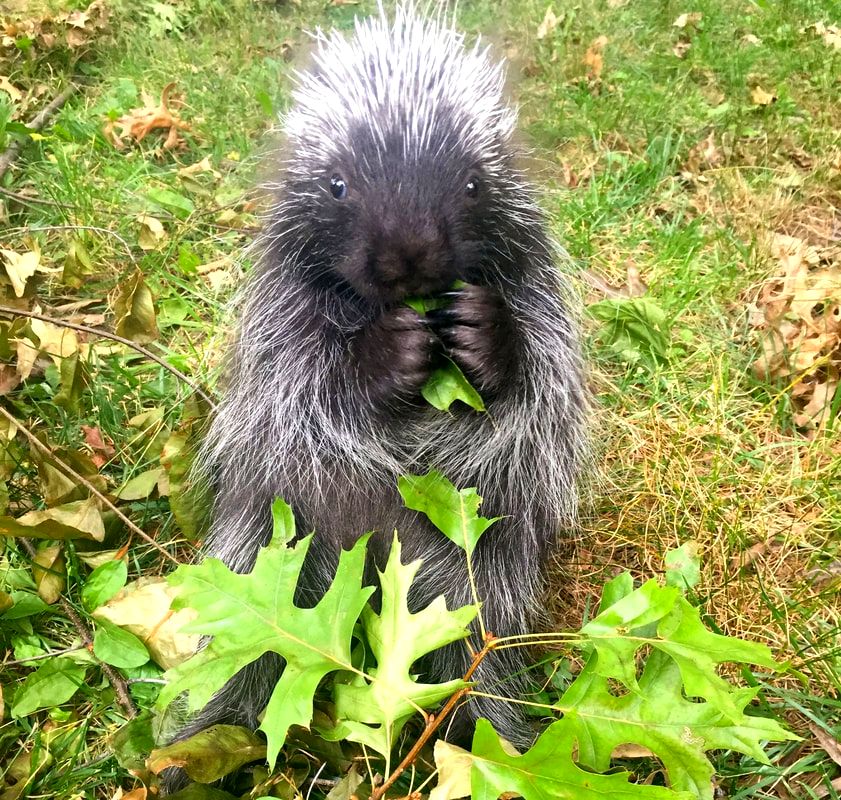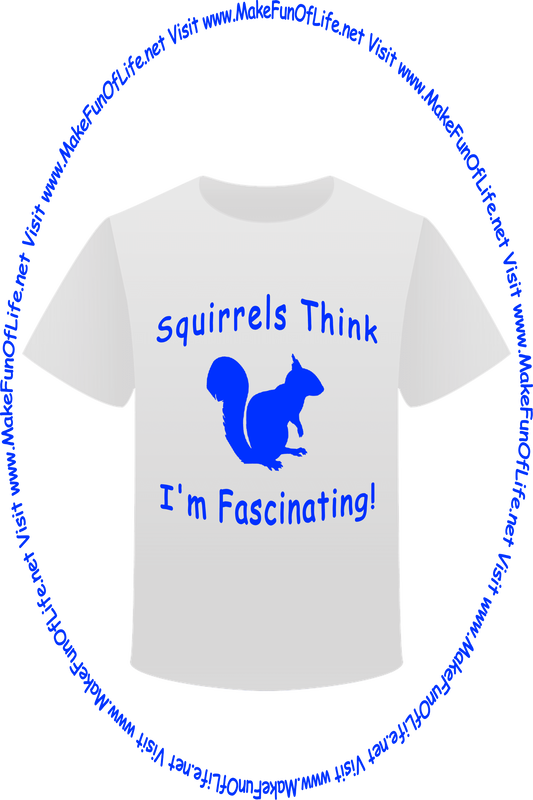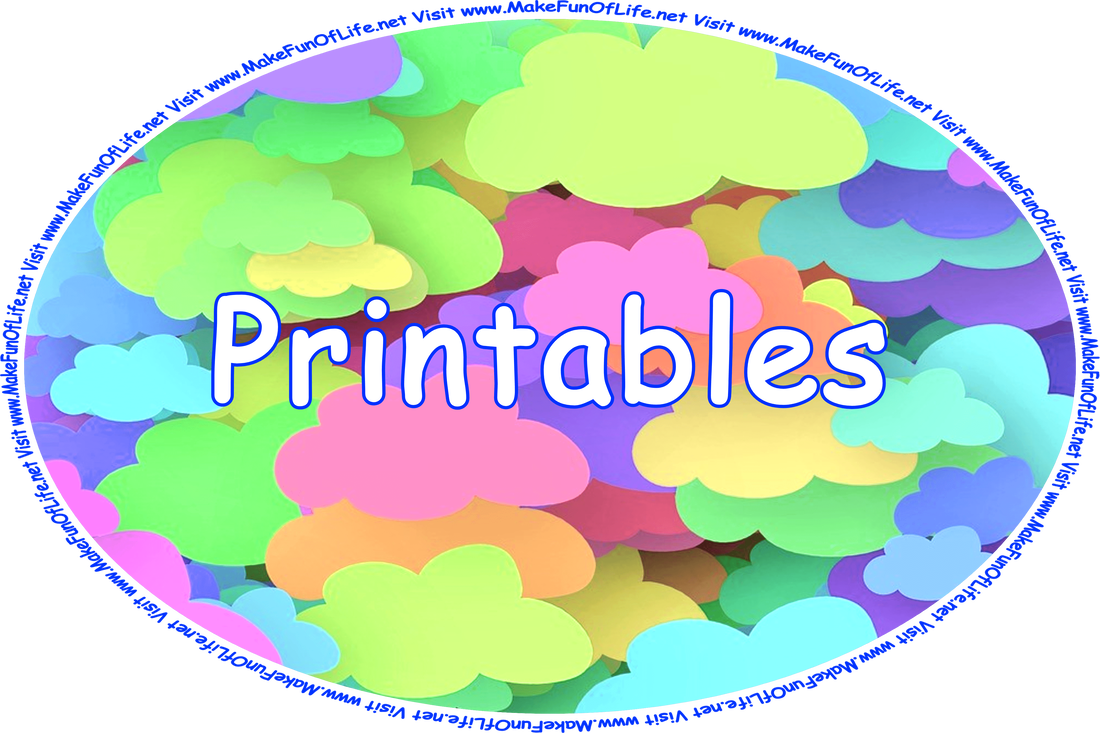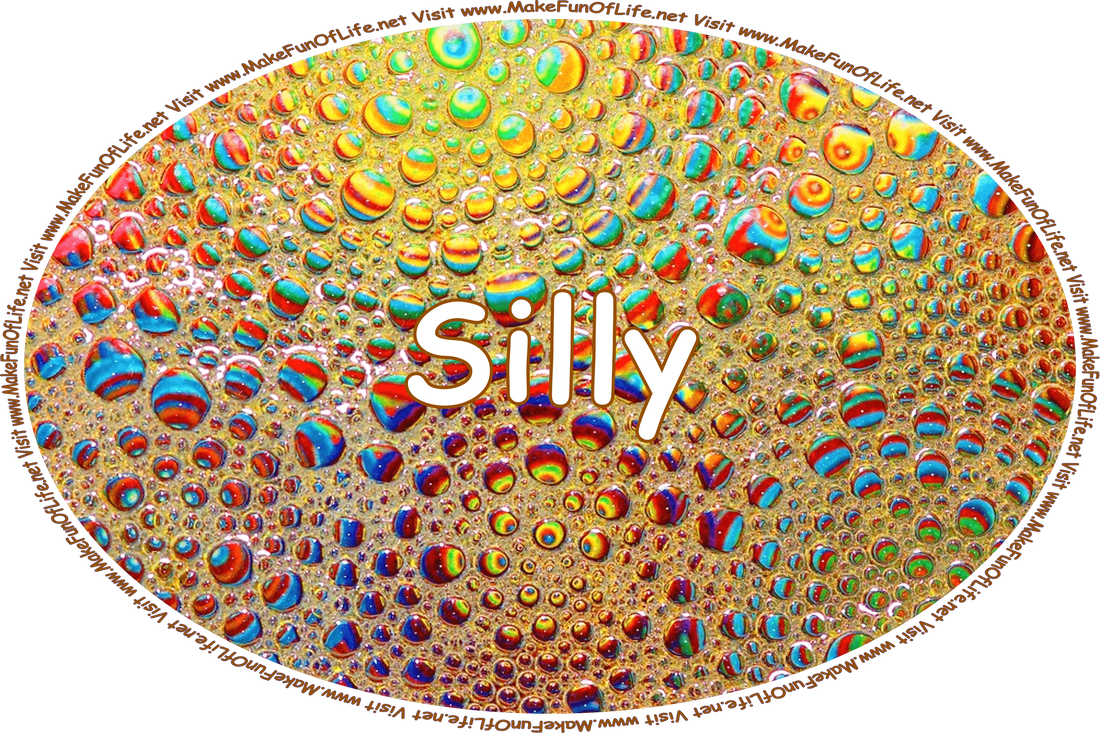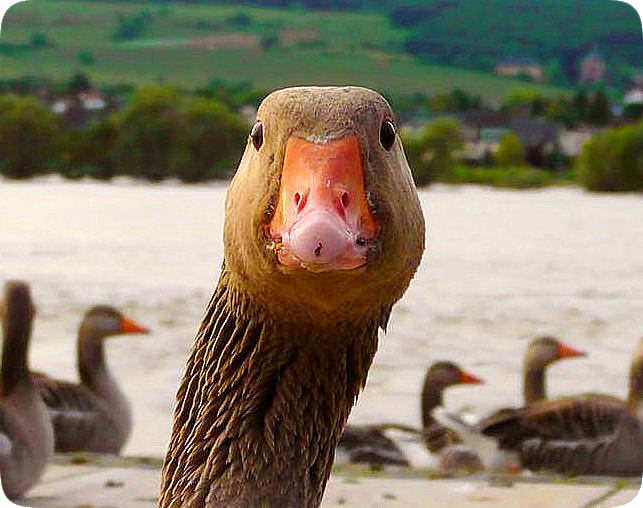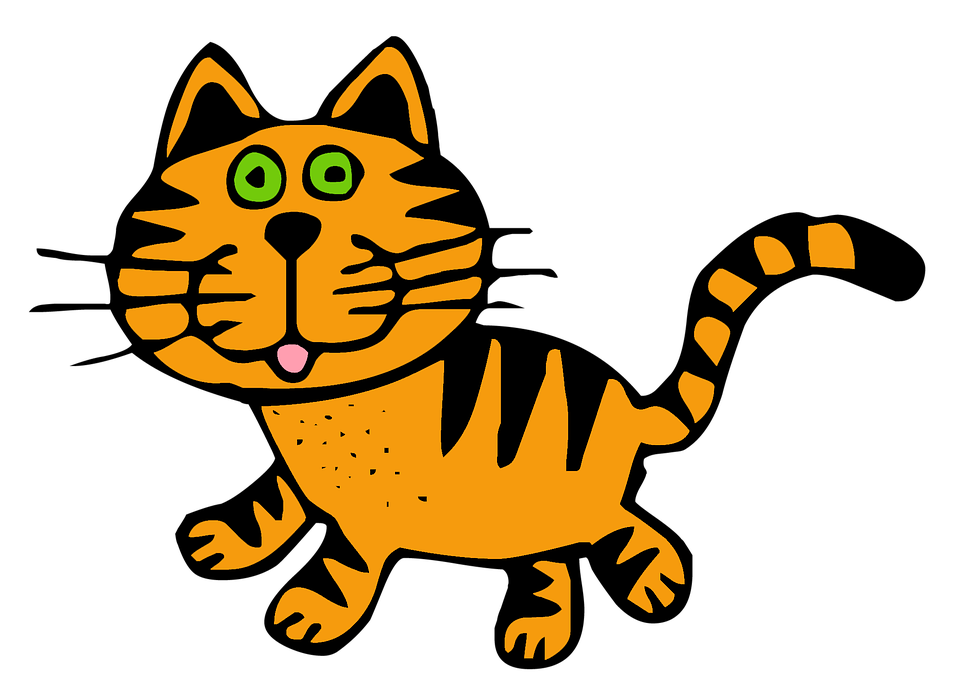Look, it’s Bigfoot, the wild man of the forest . . . oh, wait, it’s just a porcupine . . .
Perry: What is part pig and part tree?
Jerry: A porky-pine!
Friendship
There once were two back-country geezers
Who got porcupine quills in their sneezers.
The sat beak to beak
For more than a week
Working over each other with tweezers.
by John Ciardi (John Anthony Ciardi (1916 - 1986))
Polly: What do you get when you cross a cat with a porcupine?
Holly: An animal that says, “Meowch!” when it licks it fur.
Porcupine Facts
- An adult male porcupine is called a boar.
- An adult female porcupine is called a sow.
- A young porcupine is called a pup or a porcupette.
- The plural of porcupine is porcupines.
- A group of porcupines is called a family, or imaginatively, a prickle.
- The sounds made by porcupines are called screeches, whines, and grunts.
- Porcupines are mostly nocturnal, or active at night.
- Porcupines are primarily herbivores, or animals that eat plants.
- Porcupines in the wild can live for about 5 to 7 years.
- Porcupines in captivity can live for up to 20 years.
Priscilla: What do you get when you cross a porcupine with a balloon?
Paula: Pop!
Perry: What is part pig and part tree?
Jerry: A porky-pine!
Friendship
There once were two back-country geezers
Who got porcupine quills in their sneezers.
The sat beak to beak
For more than a week
Working over each other with tweezers.
by John Ciardi (John Anthony Ciardi (1916 - 1986))
Polly: What do you get when you cross a cat with a porcupine?
Holly: An animal that says, “Meowch!” when it licks it fur.
Porcupine Facts
- An adult male porcupine is called a boar.
- An adult female porcupine is called a sow.
- A young porcupine is called a pup or a porcupette.
- The plural of porcupine is porcupines.
- A group of porcupines is called a family, or imaginatively, a prickle.
- The sounds made by porcupines are called screeches, whines, and grunts.
- Porcupines are mostly nocturnal, or active at night.
- Porcupines are primarily herbivores, or animals that eat plants.
- Porcupines in the wild can live for about 5 to 7 years.
- Porcupines in captivity can live for up to 20 years.
Priscilla: What do you get when you cross a porcupine with a balloon?
Paula: Pop!
Be sure to always eat lots of green leafy vegetables so your porcupine quills will grow to be long and strong and sharp and pointy . . .
What do porcupines eat? Porcupines are regarded as being primarily herbivores, or animals that eat plants. They like leaves, including grass, evergreen needles, and clover. They also eat bark, stems, twigs, roots, flowers, nuts, seeds, berries and other fruit, and aquatic, or water, plants. However, porcupines will also eat insects, small reptiles, and bird eggs, though less often. They are particularly partial to salt. Basically, if something somewhere can be gnawed on, there is a porcupine trying to get to it.
Porcupine Picnics
When porcupines get
together for picnics,
Nobody has
to bring any toothpicks.
by Arden Davidson
Megan: What did the nearsighted porcupine say to the cactus?
Melvin: “Is that you, Patricia?”
Porcupines vary in color, from brown, to gray, to black, to yellow, with some of the rarer porcupine species found in white. They have small rounded ears, small dark eyes, blunt snouts, small mouths, teeth that constantly grow, short legs, four-fingered front paws with long curved claws, five-fingered back paws with long curved claws, short tails, and long barbed quills. Porcupines vary in size, from tiny 1-kilogram porcupines found in South America, to enormous 10-kilogram porcupines found in Africa.
The Porcupine
Any hound a porcupine nudges
Can’t be blamed for harboring grudges.
I know one hound that laughed all winter
At a porcupine that sat on a splinter.
by Ogden Nash
The English word ‘porcupine’ was derived from the Middle French ‘porc d’espine’ meaning ‘spiny pig’ or ‘thorny pig.’ Middle French ‘porc d’espine’ was itself derived from the Latin words ‘porcus’ meaning ‘pig’ and ‘spina’ meaning ‘spine’ or ‘thorn.’ The Middle French ‘porc d’espine’ was adopted into Middle English as variants such as ‘porcupyne’ and ‘porcapyne.’ Over time, these variants became the standardized Modern English word ‘porcupine.’ A fun though somewhat archaic English word for porcupine is ‘quill-pig.’ Although the word ‘pig’ can be found in the original names for them, porcupines are rodents, and not related to pigs.
The Porcupine
A porcupine looks somewhat silly.
He also is extremely quilly.
And if he shoots a quill at you,
Run fast -
Or you’ll be quilly, too.
I would not want a porcupine
To be my loving valentine.
by Karla Kuskin (1932 - 2009)
Jacque: How do you pet a porcupine?
Jacqueline: Very, very carefully!
What do porcupines eat? Porcupines are regarded as being primarily herbivores, or animals that eat plants. They like leaves, including grass, evergreen needles, and clover. They also eat bark, stems, twigs, roots, flowers, nuts, seeds, berries and other fruit, and aquatic, or water, plants. However, porcupines will also eat insects, small reptiles, and bird eggs, though less often. They are particularly partial to salt. Basically, if something somewhere can be gnawed on, there is a porcupine trying to get to it.
Porcupine Picnics
When porcupines get
together for picnics,
Nobody has
to bring any toothpicks.
by Arden Davidson
Megan: What did the nearsighted porcupine say to the cactus?
Melvin: “Is that you, Patricia?”
Porcupines vary in color, from brown, to gray, to black, to yellow, with some of the rarer porcupine species found in white. They have small rounded ears, small dark eyes, blunt snouts, small mouths, teeth that constantly grow, short legs, four-fingered front paws with long curved claws, five-fingered back paws with long curved claws, short tails, and long barbed quills. Porcupines vary in size, from tiny 1-kilogram porcupines found in South America, to enormous 10-kilogram porcupines found in Africa.
The Porcupine
Any hound a porcupine nudges
Can’t be blamed for harboring grudges.
I know one hound that laughed all winter
At a porcupine that sat on a splinter.
by Ogden Nash
The English word ‘porcupine’ was derived from the Middle French ‘porc d’espine’ meaning ‘spiny pig’ or ‘thorny pig.’ Middle French ‘porc d’espine’ was itself derived from the Latin words ‘porcus’ meaning ‘pig’ and ‘spina’ meaning ‘spine’ or ‘thorn.’ The Middle French ‘porc d’espine’ was adopted into Middle English as variants such as ‘porcupyne’ and ‘porcapyne.’ Over time, these variants became the standardized Modern English word ‘porcupine.’ A fun though somewhat archaic English word for porcupine is ‘quill-pig.’ Although the word ‘pig’ can be found in the original names for them, porcupines are rodents, and not related to pigs.
The Porcupine
A porcupine looks somewhat silly.
He also is extremely quilly.
And if he shoots a quill at you,
Run fast -
Or you’ll be quilly, too.
I would not want a porcupine
To be my loving valentine.
by Karla Kuskin (1932 - 2009)
Jacque: How do you pet a porcupine?
Jacqueline: Very, very carefully!
Porcupines have soft hair over most of their bodies, but it is best not to try to pet them, because their soft hair is intermixed with modified hairs called quills, or spikes. These are sharp, needle-like growths, located on the backs and sides and tails. An average adult porcupine has approximately 30,000 quills, which grow out and are replaced with new ones each year. The quills are about 7 centimeters (about 2.75 inches) long. While porcupines cannot ‘shoot’ their quills, they do detach quite easily from the animals, become imbedded in the skin, and become difficult to remove. The quills can be extremely painful to people, pets, livestock, and other animals that are pricked by them. Porcupine quills are not venomous, poisonous, or toxic, but they are likely to be covered with millions of microbes that can cause infections when the quills scratch or pierce the skin. The infections can sicken and even kill people and animals. Following any contact with a porcupine, go immediately to a doctor, and take your pet or any other animal to a veterinarian, for medical attention.
Pearl: What do porcupines say when they kiss?
Paul: “Ouch!”
The two main types of porcupines are Old World porcupines and New World porcupines. Old World porcupines inhabit the forests and jungles of Asia, Europe, and parts of Africa.
A very sad, very short love story: A nearsighted porcupine fell in love with a pincushion.
Old World porcupines live in Southern Europe, Asia, and Africa. Old world porcupines may not be good climbers, but they are excellent swimmers.
Porcupines are excellent swimmers because their hollow air-filled quills make it easy for them to stay afloat in water. Just remember what your mother told you, though: “Never go swimming with sharks, alligators, or porcupines.”
Pearl: What do porcupines say when they kiss?
Paul: “Ouch!”
The two main types of porcupines are Old World porcupines and New World porcupines. Old World porcupines inhabit the forests and jungles of Asia, Europe, and parts of Africa.
A very sad, very short love story: A nearsighted porcupine fell in love with a pincushion.
Old World porcupines live in Southern Europe, Asia, and Africa. Old world porcupines may not be good climbers, but they are excellent swimmers.
Porcupines are excellent swimmers because their hollow air-filled quills make it easy for them to stay afloat in water. Just remember what your mother told you, though: “Never go swimming with sharks, alligators, or porcupines.”
New World porcupines are indigenous, or native, to both North America and South America, where they live in forests, deserts, and grasslands. New World porcupines are good climbers and spend much of their time in trees. Some even have prehensile (gripping) tails to aid in climbing. Those with specialized tails are capable of clinging to trees with their tails and catching surrounding branches if they lose their balance or start to fall. This may be the reason why we so seldom hear anyone shout, “Watch out, it’s raining porcupines!”
||||||||||||||||||||||||||||||||||||||||||||||||||||||||||||||||||||||||||||||||||||
Cag the Porcupine
Cag the porcupine poked out his nose.
He lived in the wild where the Alagash flows.
His hair wasn’t curly, his temper was surly.
He’d risen too early which heightened his woes.
Cag the porcupine lumbered along,
There wasn’t a thing in the woods but was wrong.
The world as created was much overrated
And, oh, how he hated that chickadee’s song.
Cag the porcupine lurched on his way.
The fox and the wolverine wished him, “Good day.”
But Cag only mumbled and onward he stumbled,
“Some people,” he grumbled, “have too much to say.”
Cag the porcupine grumped to the hills,
“These sociable folks are the worst of my ills.
I wish I were prickly and stickly,” and quickly
He found himself thickly provided with quills.
Cag the porcupine nibbles a cone,
The thistli-est, bristli-est, quadruped known,
And nobody pets him and nobody frets him
And everyone lets him strictly alone.
by Author Unknown
||||||||||||||||||||||||||||||||||||||||||||||||||||||||||||||||||||||||||||||||||||
Why are porcupines seldom seen? Porcupines are nocturnal animals, meaning they are actively primarily at night. During daylight hours, they rest in places such as trees, hollow logs, and crevices in rocks.
Predators of porcupines, or animals that hunt and eat them, include black martens, bobcats, cougars, coyotes, eagles, fishers, humans, owls, and wolves.
||||||||||||||||||||||||||||||||||||||||||||||||||||||||||||||||||||||||||||||||||||
The Porcupine
Rebecca Jane,
a friend of mine,
went out to pat
a porcupine.
She very shortly
came back in,
disgusted with
the porcupin.
“One never, ever
should,” said Jane,
“go out and pat
a porcupain!”
by N. M. Bodecker (Niels Mogens Bodecker (1922 - 1988))
||||||||||||||||||||||||||||||||||||||||||||||||||||||||||||||||||||||||||||||||||||
Now you can tell all your friends that you know all about porcupines . . . because you have seen it all . . . on MFOL!
||||||||||||||||||||||||||||||||||||||||||||||||||||||||||||||||||||||||||||||||||||
Cag the Porcupine
Cag the porcupine poked out his nose.
He lived in the wild where the Alagash flows.
His hair wasn’t curly, his temper was surly.
He’d risen too early which heightened his woes.
Cag the porcupine lumbered along,
There wasn’t a thing in the woods but was wrong.
The world as created was much overrated
And, oh, how he hated that chickadee’s song.
Cag the porcupine lurched on his way.
The fox and the wolverine wished him, “Good day.”
But Cag only mumbled and onward he stumbled,
“Some people,” he grumbled, “have too much to say.”
Cag the porcupine grumped to the hills,
“These sociable folks are the worst of my ills.
I wish I were prickly and stickly,” and quickly
He found himself thickly provided with quills.
Cag the porcupine nibbles a cone,
The thistli-est, bristli-est, quadruped known,
And nobody pets him and nobody frets him
And everyone lets him strictly alone.
by Author Unknown
||||||||||||||||||||||||||||||||||||||||||||||||||||||||||||||||||||||||||||||||||||
Why are porcupines seldom seen? Porcupines are nocturnal animals, meaning they are actively primarily at night. During daylight hours, they rest in places such as trees, hollow logs, and crevices in rocks.
Predators of porcupines, or animals that hunt and eat them, include black martens, bobcats, cougars, coyotes, eagles, fishers, humans, owls, and wolves.
||||||||||||||||||||||||||||||||||||||||||||||||||||||||||||||||||||||||||||||||||||
The Porcupine
Rebecca Jane,
a friend of mine,
went out to pat
a porcupine.
She very shortly
came back in,
disgusted with
the porcupin.
“One never, ever
should,” said Jane,
“go out and pat
a porcupain!”
by N. M. Bodecker (Niels Mogens Bodecker (1922 - 1988))
||||||||||||||||||||||||||||||||||||||||||||||||||||||||||||||||||||||||||||||||||||
Now you can tell all your friends that you know all about porcupines . . . because you have seen it all . . . on MFOL!

